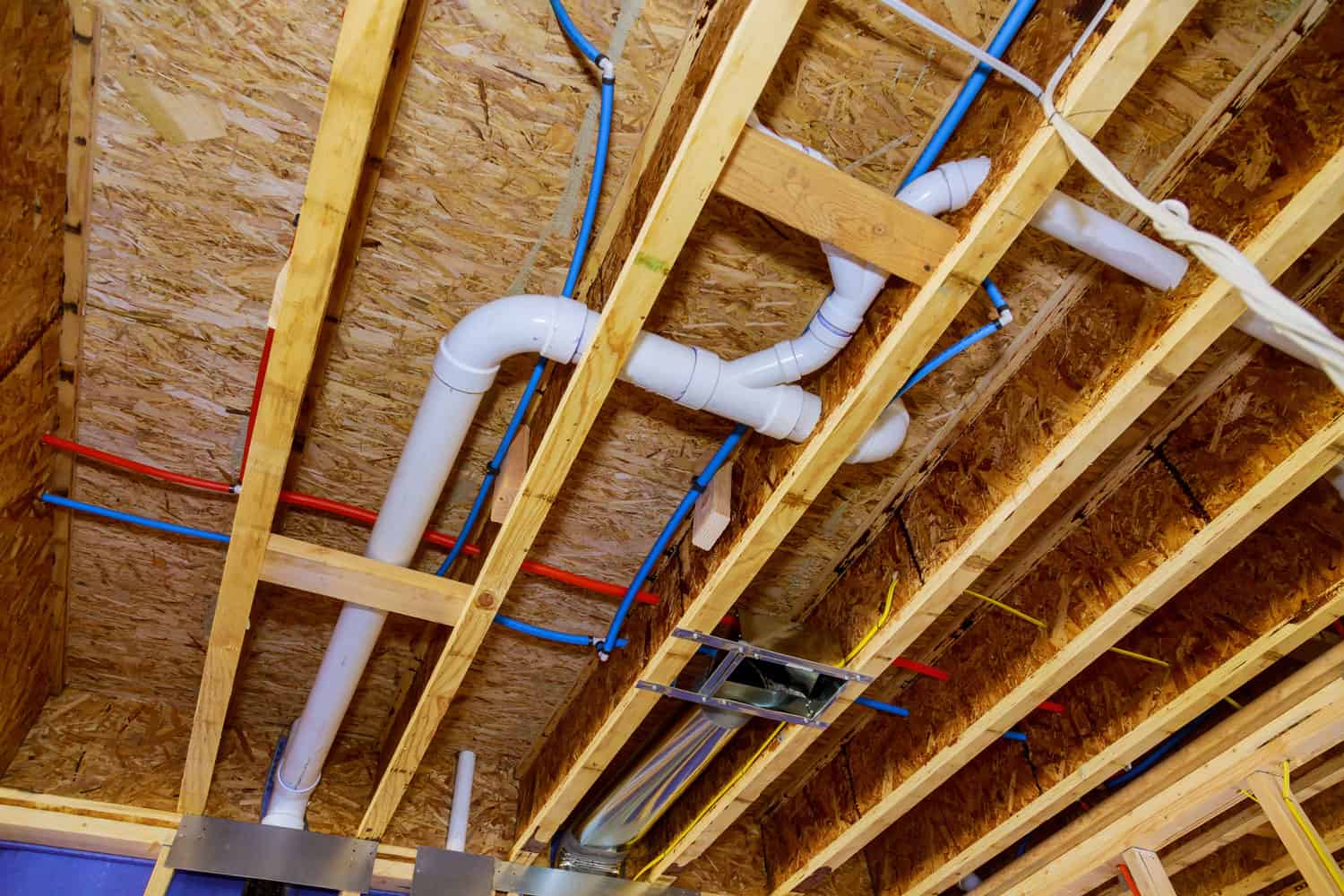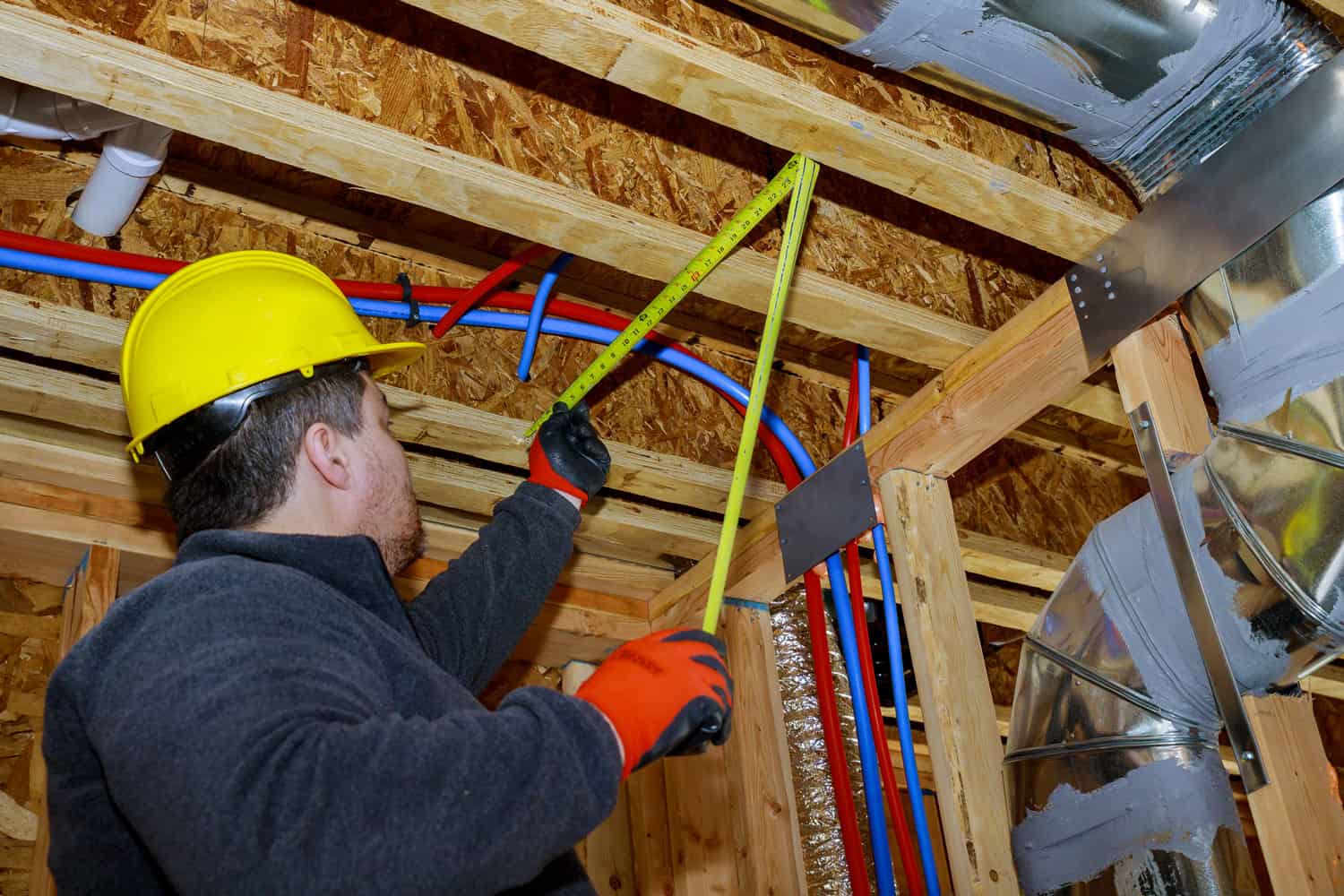PEX (cross-linked polyethylene) supplies homeowners with a flexible plastic freeze-resistant water supply system. However, since metal underground water pipe has often been considered an electrical grounding standard, homeowners wonder whether grounding is needed with PEX plumbing and whether personal safety is put at risk if they do not have a metal water pipe.
Whether the plumbing system is PEX or another material, proper grounding is always important to direct electrical charges into the ground away from the home and its occupants. For homes with PEX plumbing, the ‘path of least resistance’ is best provided via 8-foot conductive metal rods placed at the home exterior with 2 to 3 inches exposed, typically, on the same side as the electrical box (panel).
What happens if your house is not grounded? How long should a ground rod be? What are the disadvantages of PEX plumbing? Join us as we look at some PEX and grounding considerations.

Why PEX Plumbing Needs To Be Grounded
To help with this perplexing question, we reviewed reference by the National Fire Protection Association (NFPA), the United States Department of Housing and Urban Development (HUD), electrical experts, and plumbing experts as it applies to PEX, grounding, and the National Electrical Code (NEC). Always utilize plumbing and electrician experts when needed and refer to local building codes to ensure the safety of your home and its occupants.
Grounding provides home safety by directing dangerous currents into the ground instead of into the occupants, appliances, electronics, or the home itself if there is a wiring or other issue. If, however, there is no ground system, or if there is an issue with the ground system, serious or fatal injury may result.
What happens if your house is not grounded?
If an issue occurs within a wiring circuit, grounding provides a safe path for electricity to reach the ground. House fire or damage to appliances or electronics may occur without proper grounding.
Per the National Fire Protection Association (NFPA), proper electrical system grounding may help a person avoid shock and fatality. The NFPA National Electrical Code (NEC) is updated every three years and provides safety standards for electrical wiring and equipment installation. Local code supersedes NEC.
Check out the 2020 NEC Handbook on Amazon.
What are the disadvantages of PEX plumbing?

Often utilized for cost efficiency, with PEX the least expensive at the time of this writing, plastic pipes provide an easy-to-install light-weight option over metal pipes. Per the Healthy Housing Reference Manual from the United States Department of Housing and Urban Development (HUD), PEX works well for new home construction and repiping in corrosive water conditions. The same aspects that cause this durability, flexibility, and heat-resistance also cause concern or potential issues when utilizing PEX plumbing.
UV Sensitivity
Buried, PEX makes a good option; however, PEX is UV light-sensitive. Depending on the manufacturer's recommendations, you should leave PEX outside no longer than 30 to 60 days before you install PEX. Otherwise, it can deteriorate.
Water Quality
General water taste or smell quality is often a PEX plumbing concern. This issue is often diminished by time. Many report a great reduction in impact following 30 days of use. Plumbers often flush systems after installation to reduce this impact. Others suggest water filters as a way to ensure the quality of drinking water.
Check out this under sink water filter system on Amazon.
Semi-Permeable
PEX is semi-permeable, providing the possibility for liquids, including chemicals, to enter the pipe and contaminate the water being carried through the pipe.
Chemical Release (Toxicity)
Some have raised concerns about potential adverse health effects from PEX pipes. While it is generally understood that PEX does not contain BPA (bisphenol A, alters cell function), the fear is that different PEX formulations may be releasing other toxins into the water being carried by PEX pipes.
Water testing options, from simple to professional, are available to assist with determining possible water contaminant issues.
Check out this drinking water test kit on Amazon.
Attractiveness To Rodents
While there is no general consensus about the reason, cases have been reported of rodents chewing through PEX plumbing. Whether the issue is related to rodents liking to chew, liking the taste of the PEX itself, or of rodents being dehydrated by poison and seeking water in the pipes based on sound or other indicators, PEX leaks from rodent-chewing is a possible disadvantage.
Non-Recyclable
Currently, PEX is not commonly recycled since it does not melt like other recyclable plastics. PEX is typically decontaminated, ground up, and processed into other plastic products.
How long should a ground rod be?

Use an approved conductive metal (such as copper) grounding rod to create a safe route for displaced electricity to leave your home. Follow all local codes; however, general guidelines specify you use an 8-foot ground rod. Listed rods are ½-inch in diameter and will display a mark near the top to show the inspector that the rod is approved. Non-approved rods need to be ⅝-inches wide.
Several days before you need to dig or drive anything into the ground, call 811 (or your related country utility line locator line) to have underground utility lines located. Drive the rod into the ground at least 2 feet from your home near the electrical panel. A grounding wire will connect the ground rod to the electrical panel.
Check out this 8-foot ground rod on Amazon.
How can you tell if your house is not properly grounded?
Several indicators may provide insight to help you decide if you may have grounding issues in your home.
Are your occupants receiving shocks?
If your home’s occupants are receiving shocks while using appliances, it may be time to verify whether your home is properly grounded. If touching metal objects in your home causes a shock, this could also signal it is time to review home grounding.
Does your home have modifications and additions?
Are there parts of your home that have modifications compared to the original look of the overall structure? Does your home have additions that were not part of the original architecture? Have appliances been upgraded from the time period of the original home or have outlets, switches, or other fixtures been upgraded? If so, grounding may not have been properly integrated into the wiring system.
How many slots do your outlets have?
Since 1920, polarized 2-slot receptacles have wide (neutral) and narrow (hot) slots to allow blades to plug in one way for safety. Polarized 2-slot receptacles do not have a ground slot and cannot provide a direct path from plugged-in items to the ground. Many are also not part of homes with grounded circuits. Modern 3-slot outlets have a third u-slot for ground protection.
While a three-prong adapter (converter) allows you to use a grounded appliance in your 2-slot outlet, a ground is not established. If an electrical surge occurs, an electrical shock is likely to follow.
Replacing polarized receptacles with 3-slot outlets will not provide grounded coverage unless the wiring system and the outlet itself are grounded. Though more expensive, the safest option is to contact an electrician to upgrade the 2-slot outlets to properly-grounded 3-slot outlets.
Check out this duplex receptacle on Amazon.
Do your outlets pass the grounding test?
A variety of tools exist that allow you to test outlet grounding. Easy testers plug directly into the outlet and provide codes to let you know whether the outlet is properly grounded. You need to check each outlet to verify each is properly grounded.
Check out this outlet tester on Amazon.
In Closing

Proper home grounding is required with PEX plumbing. To ensure occupant safety, prevent fire, and protect appliances and electronics, use an 8-foot grounding rod. Refer to local code and consult a licensed electrician or plumber where needed.
You may also find this PEX information interesting:






